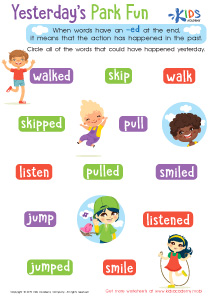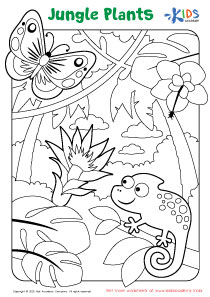Visual discrimination Easy Kindergarten Worksheets
3 filtered results
-
From - To
Enhance your child's learning with our Visual Discrimination Easy Kindergarten Worksheets! Designed for young learners, these engaging printable worksheets focus on developing essential visual discrimination skills. Through fun activities, children identify differences, match pictures, and sort objects, helping them sharpen their focus and observational skills. Ideal for classroom use or at-home learning, our worksheets make education enjoyable and interactive! Each activity promotes critical thinking and strengthens brain development, laying a solid foundation for reading and writing. Accessible and user-friendly, these worksheets are perfect for teachers and parents eager to support their kindergarteners in becoming confident learners. Download today and watch your child thrive!
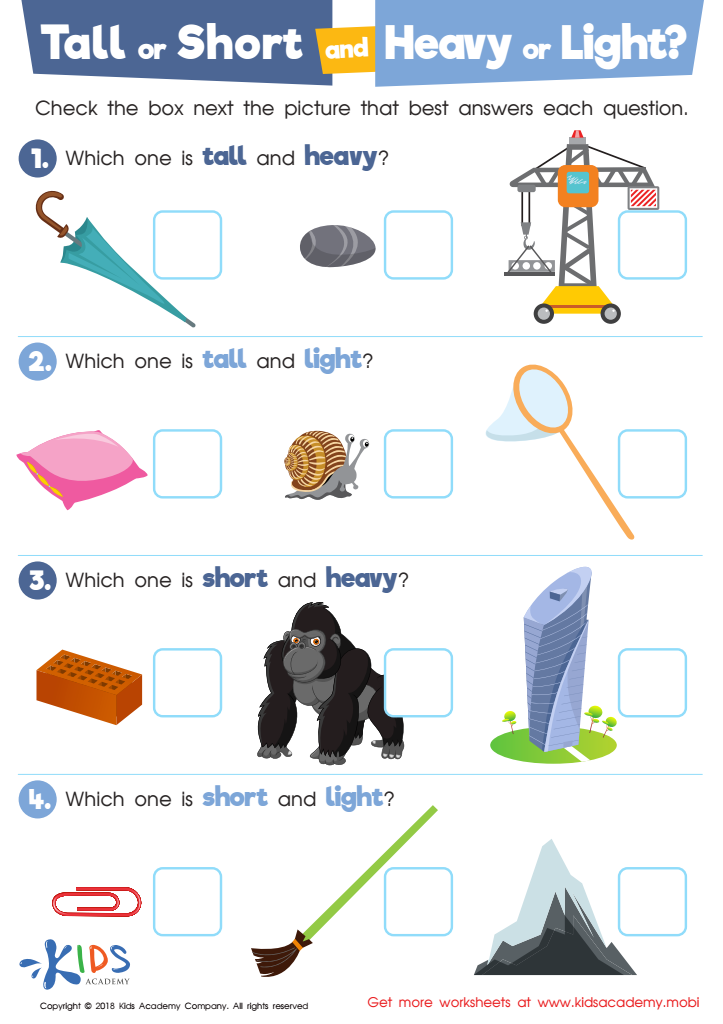

Tall or Short and Heavy or Light? Worksheet
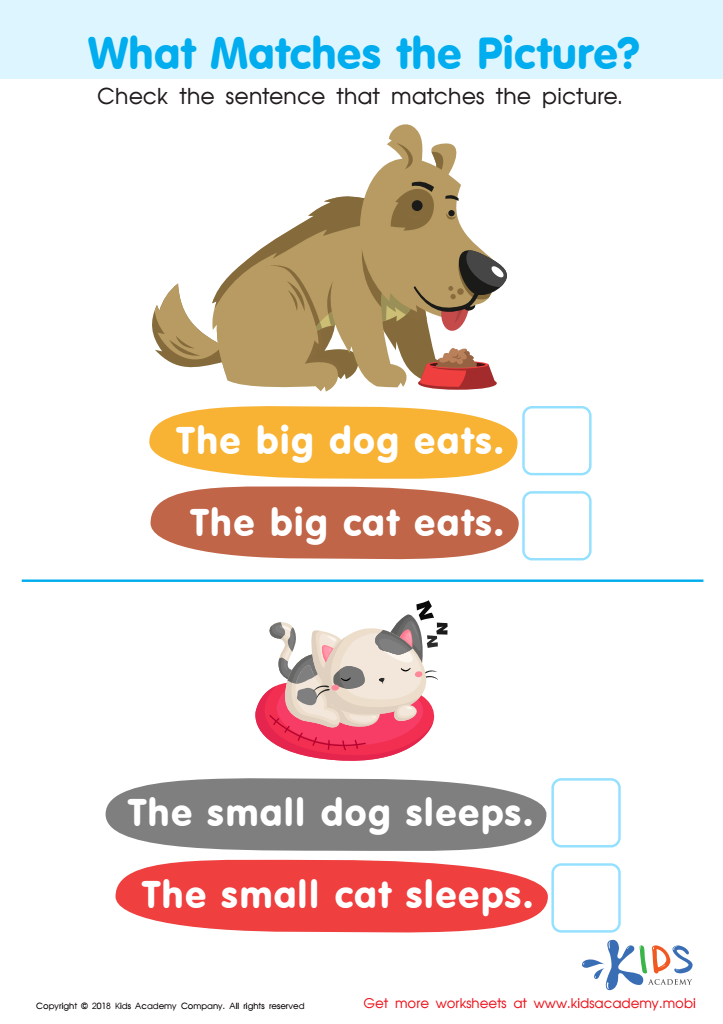

What Matches the Picture? Worksheet
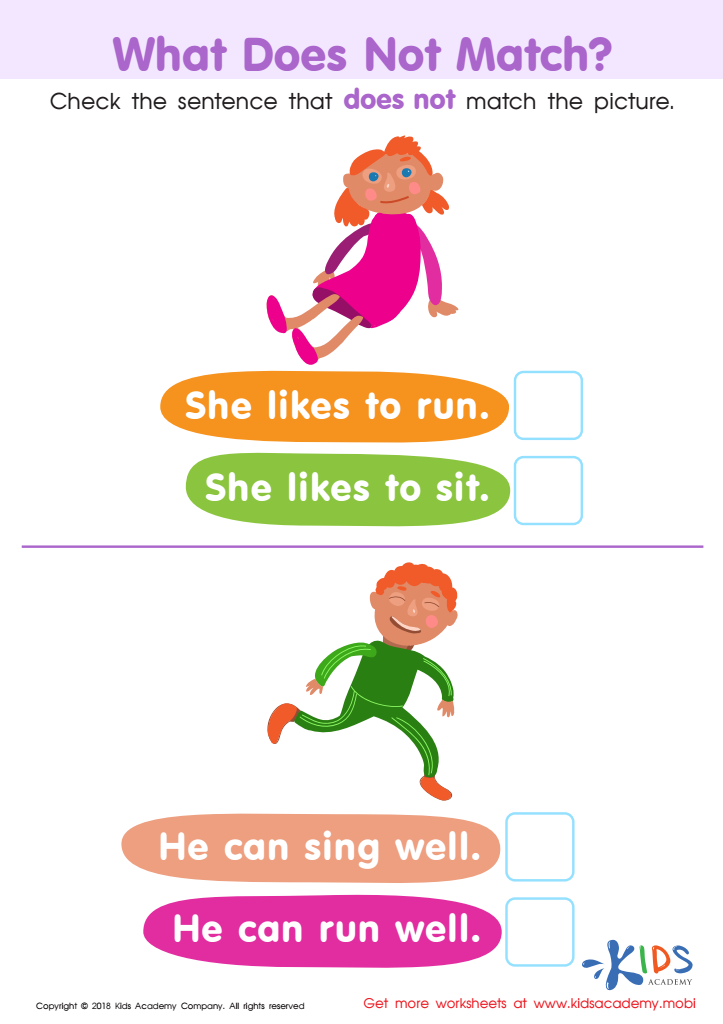

What Does Not Match? Worksheet
Visual discrimination is a critical skill for young learners, impacting their ability to recognize and interpret visual information accurately. Parents and teachers should prioritize this skill in kindergarten, as it lays the foundation for future academic success. Visual discrimination helps children identify letters, numbers, shapes, and patterns, which are essential for reading, writing, and math.
By developing visual discrimination, children enhance their ability to differentiate similar objects, notice details, and understand spatial relationships. This ability fosters their cognitive skills and boosts confidence in their learning capabilities. Furthermore, strong visual discrimination supports essential life skills, such as following directions, recognizing safe versus unsafe situations, and making choices based on visual cues.
Incorporating activities that promote visual discrimination—such as sorting games, puzzles, and matching tasks—can be enjoyable for both parents and teachers. Such activities create engaging learning experiences that motivate children while reinforcing essential skills. Ultimately, by investing time and resources in developing visual discrimination, parents and teachers can ensure that children are better equipped for academic challenges, leading to long-term educational benefits and an enriched learning experience.

 Assign to My Students
Assign to My Students




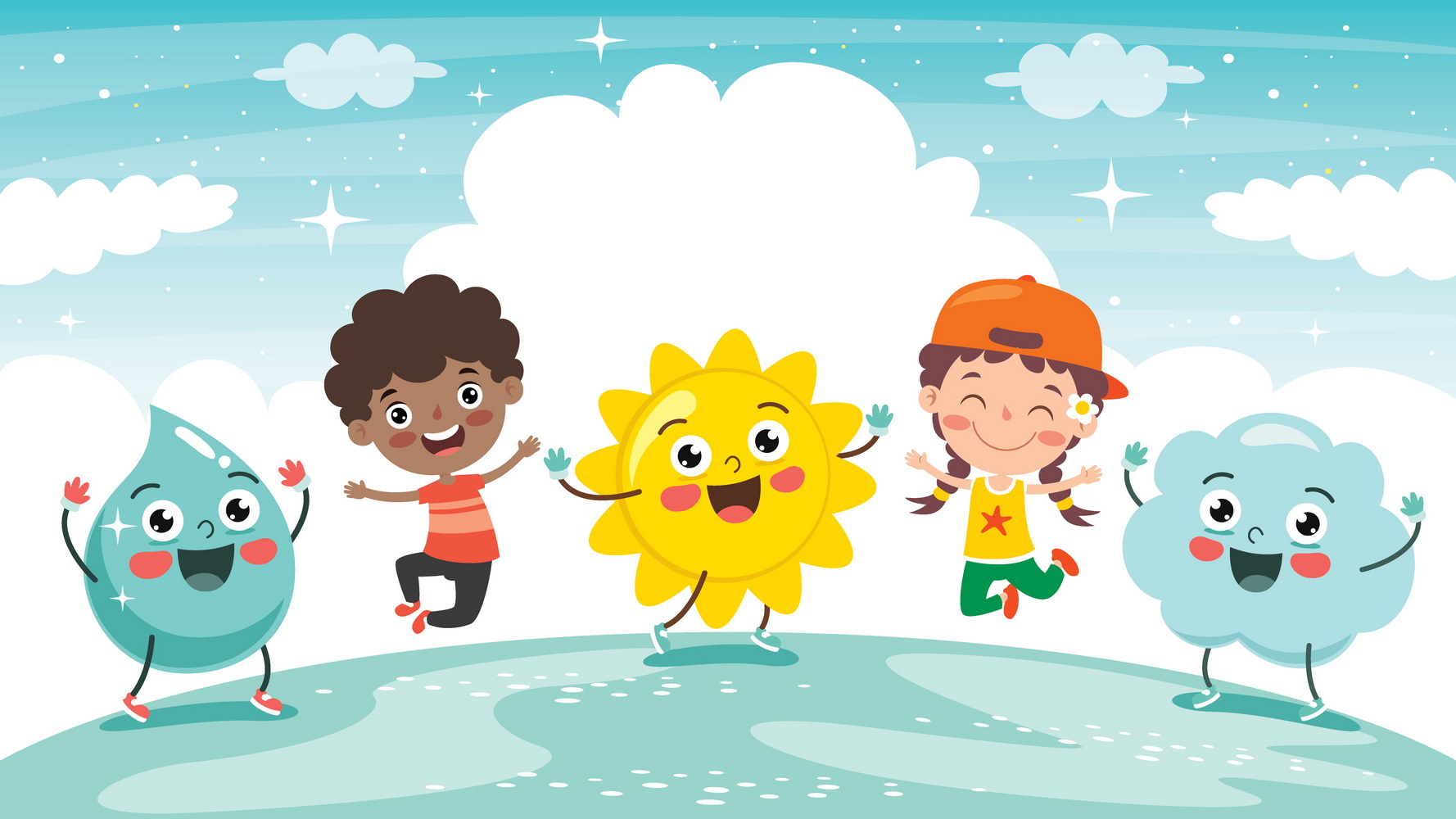
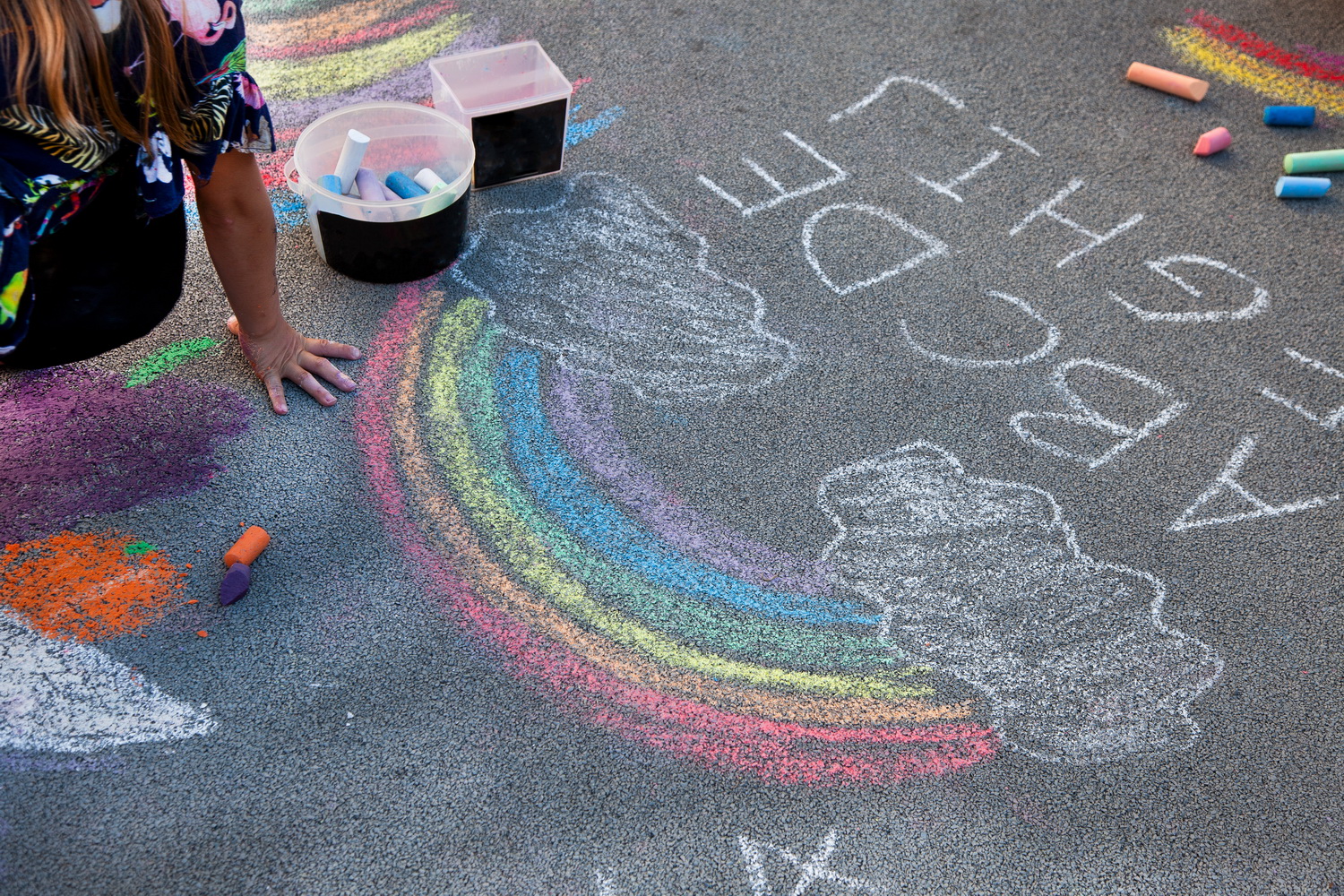

.jpg)






